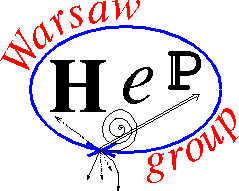SEMINARIUM FIZYKI WIELKICH ENERGII
Dnia 21 Października(piątek) o godzinie 10:15, w sali B2.38 odbędzie się
seminarium, na którym zostanie wygłoszony referat pt.:
„ECFA workshops on e+e- Higgs/EW/Top factory”
Referuje: prof. dr hab. Aleksander Filip Żarnecki (IFD UW)
Abstract:
Based on the recommendations of the Update of the European Strategy for Particle Physics, the European Committee for Future Accelerators (ECFA) has decided to organise a series of workshops on physics studies, experiment design and detector technologies towards a future electron-positron Higgs/EW/Top factory.
Three Working Groups were established, led by conveners from both experiment and theory, on Physics Potential (WG1), Physics Analysis Methods (WG2) and Detector R&D (WG3). The first community-wide plenary ECFA workshop e+e- Higgs/EW/Top factory took place recently at DESY, Hamburg. I will report on the DESY meeting and the ECFA initiative in general.
Serdecznie zapraszamy
dr hab. Katarzyna Grzelak
prof. dr hab. Jan Królikowski
prof. dr hab. Aleksander Filip Żarnecki

